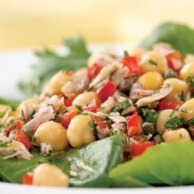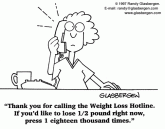Have you hit a weight loss plateau…?
Right folks…your weight loss plateau questions answered here…
Overview
Weight loss is typically a long process. Most people lose the greatest amount of weight at the beginning of their regimen, due to the many changes their bodies go through. However, weight loss plateaus are also common. This occurs when you do not gain weight back but you are not losing any more weight, either. You can overcome weight loss plateaus in various ways so you can get back on track to your ultimate goals.
Cause
While you lose weight, you likely are cutting back on your calories. Although calorie-cutting helps you lose more pounds, it also can decrease your metabolism. Also, when you lose too much weight too soon, your body can respond by eating muscle stores in order to make up for the loss in calories. Because muscles help rev up your metabolism, losing muscle can contribute to a slower metabolism. During such a scenario, your body no longer burns calories, so you reach a plateau in which you will not lose any weight.
Diet
Eat a mix of carbohydrates, protein and healthy fat every few hours in order to help speed up your metabolism. This also will help prevent you from going hungry too long and overindulging at your next meal. As your Personal Trainer, I recommend that you vary your healthy food choices in order to prevent boredom. This will help prevent meal-skipping, which can thwart your continued weight loss efforts.
Exercise
While adequate fuel is necessary to help increase your metabolism, you also will need to revisit your exercise routines. Once your body becomes too accustomed to a particular type of exercise, your muscles adapt and you will not lose as many calories. Intensify your workouts by pushing it to the next level or by trying something new. For instance, if you speed-walk, try adding some jogging intervals. Also, add some strength-training routines to help build up your muscles.
Considerations
You may experience a weight loss plateau within the first month of your weight loss regimen and experience it occasionally until you reach your weight loss goal. The key is to quickly recognize that you have reached a plateau and respond accordingly. A weight loss plateau does not mean you have failed at your weight loss regimen.
Warning
Ideally, you should lose a maximum of 2 lbs. per week during your weight loss regimen. Although weight loss plateaus are common, your body can enter starvation mode if you lose too much weight in a short period of time. If you start to experience dizziness, headaches, hair loss, anemia, excessive fatigue and heart rate changes, call your doctor immediately.
The big 5 things for you to do to help you out of your weight loss plateau are…
1. Zig-Zag Calorie Intake
Zig-zagging, or calorie cycling is the process of varying daily calorie intake, while maintaining the same weekly intake. Instead of consuming (for example) precisely 1800 calories each day – you can mix it up. Eat 1500 calories one day, and 2100 calories the next. This can be as simple as halving then doubling a portion size, or adding a post-workout shake into the plan. Just keep your body guessing.
2. Strength Training
If you are not doing this as part of your program or lifestyle, then it’s time to start. Working your muscles will help to strengthen bone tissue, increase lean mass, and ultimately boost metabolic rate.
3. Change Your Exercise Routine
So you go walking a lot? Then try jogging, or swimming, or cycling — anything that will change the way your body is working. If you are doing low intensity cardio work, then try some high intensity exercise like kick boxing or cardio kick.
4. Alter Macro-nutrient Intake
Although it sounds complicated, once again, the idea is to change what you are eating. If (for example) you are eating a moderate diet that is higher in carbs – try eating less carbs and more protein. There is no need to get super-technical over the whole thing. If you have a carbohydrate snack every day at morning tea time – change it to a protein snack. Whatever you are doing consistently – try mixing it up a bit.
5. Change Meal Frequency
If you are eating three square meals a day – start adding snacks in between (which may mean reducing the portion size of the main meals). Eating often is an old and common style of eating – once again, you are trying to boost your metabolic rate.
Hopefully that will answer some of your questions about weight loss slowing down and potentially hitting a plateau.
Don`t panic, don`t go to extremes, have some fun whilst you are at it!
To know more get in touch!
Rachel Benton & Associates
Personal Training
Bedford, UK
Image by weddingdiet.net













Justine Machine 1:42 pm on February 24, 2010 Permalink |
Thanks Rachel,
Whilst my 2010 regime has brought consistent and steady results so far, its good to have a plan to prevent or at worst recognise and remediate.
10 down 32 to go!!
See you Monday !
Rachel Benton UK 7:29 am on February 26, 2010 Permalink |
The Machine..
Is it really 10 down? You are a star, remember it is all your hard work and just alittle of my nagging.
See you Mon
Rachel